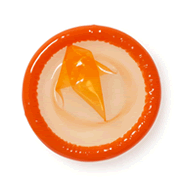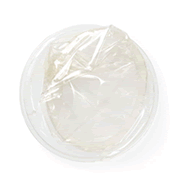Chlamydia: it’s not as pretty as it sounds
It’s common to have no symptoms, but if left untreated, it can be serious

Ah, chlamydia! It’s such a pretty-sounding name—like a type of orchid or maybe a Greek goddess—for a not-very-nice infection. Chlamydia is the most common bacterial sexually transmitted infection (STI), with an estimated 2.86 million infections per year according to the CDC. It’s especially common in people under the age of 25, people with vaginas, and people with penises who have sex with other people with penises.
But don’t freak out yet! The good news is that, unlike viral STIs like herpes and HPV, chlamydia is totally curable with either one dose or seven days of antibiotics. If you test positive for chlamydia, there are a few different ways that you can get treatment. Your health care provider may give you the medication in the office or they may prescribe you the medication for you to get from a pharmacy. Or your partner can get it for you when they get their own meds. If you get your medication from a partner (by the way, this is called “expedited partner therapy”), they should also give you information about the medication and what infection you are being treated for.
If you take the medicine as directed (and your partner or partners also take their medication), you should be good to go (at it) again one week after both you and your partner(s) have finished your medication. It’s really important for preventing re-infection to not have sex at all from the first day of treatment until seven days after the last person finishes taking their medication. The CDC recommends retesting for chlamydia three months after being treated for it.
Now that you know that it’s common and curable, let’s take a closer look at chlamydia—what it looks like, what it does, and how to avoid it.
How do you get chlamydia?
Chlamydia is spread via vaginal or anal sex (and, less frequently, oral sex) with a person who has chlamydia. It’s bacteria that likes to hang out in ejaculate (aka cum), pre-cum, and vaginal fluids. Important note: Because it’s found in pre-cum, you can get chlamydia from a person with a penis even if they don’t ejaculate. But you can’t get it from kissing, hugging, coughing, holding hands, or anything else that doesn’t involve genital fluid.
Because chlamydia only lives in genital fluids, condoms are super effective as protection against it (and as protection in general!). So it’s always a good idea to wrap it up!
What are the symptoms of chlamydia?
Like so many other STIs, the most common symptom of chlamydia is…no symptom at all. That’s why it’s so important to get tested regularly. The CDC recommends that people with vaginas who are under the age of 25 get tested for chlamydia at least once per year—and more frequently if they have other risk factors, like having sex with a partner who had chlamydia or having sex with a partner whose STI status is unknown.
Those over 25 should get tested annually if they have more than one partner, a new partner, a partner who has other partners, or a partner who has tested positive for an STI. In fact, it’s a good idea in general to get tested for STIs once a year and anytime you’ve had sex with a new partner. Check out our clinic finder to look for a place to get tested in person or read up on how to get tested for STIs, including chlamydia, via telehealth.
If people with vaginas do have symptoms, they can include abnormal vaginal discharge or a burning feeling when they pee. For people with penises, the most common symptoms are discharge from the penis and burning when they pee.
And all people can get chlamydia in their butts. Just like with chlamydia in the vagina and penis, most people don’t have any anal symptoms. But if they do, they can include pain, discharge, and bleeding.
How does chlamydia affect you in the long term?
If chlamydia is treated, there are no long-term health effects. But if it goes undiagnosed or untreated—which is especially likely in people who don’t show symptoms—it can cause serious health problems in people with vaginas.
Pelvic inflammatory disease (PID) happens when an infection like chlamydia spreads from the vagina up into the uterus, fallopian tubes, and ovaries. Symptoms can include pain in the lower abdomen, vaginal discharge with an unpleasant odor, unusual bleeding, pain or bleeding during intercourse, pain when you pee, and fever. But it can also have no symptoms at all.
If PID is left untreated for too long, it can lead to scarring and abscesses on the reproductive organs. In some cases, that can even lead to infertility and increase the risk of an ectopic pregnancy. It’s one more reason why getting tested for chlamydia regularly is an essential part of a healthy, sexually active life.
How do you feel about this article?

Find a method that fits your body and your life with our interactive method explorer.
view birth control options
